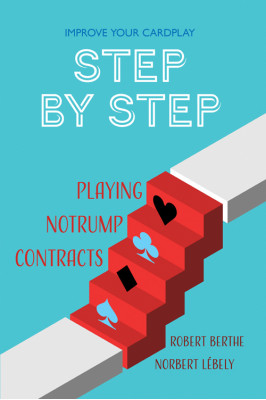Interview with author Norbert Lébely on his series Step by Step


The ‘Step by Step’ Phenomenon
Larousse de Bridge, published in France in 1995, claims that the Step by Step books have sold several hundred thousand of copies. The books have been translated into Italian, German and Spanish, and now into English. Over the years, they have continued to be bestsellers. We asked co-author, Norbert Lébely, to elaborate on why he thinks this series has found such success.
Lébely: The ‘step by step’ method was well-known to the readers of Le Bridgeur magazine. It was developed by Robert Berthe, a teacher well ahead of his time. He realized that bridge could be explained and learned using this simple approach. The popularity of his magazine articles gave him the idea to develop a series of books based on the same technique, books that would be easy to read but also fun. To do this he got me involved, since I was also very interested in teaching and writing about bridge. In fact, the success of our collaboration grew from our friendship and a perfect meeting of minds, which can be felt as you read Step by Step.
So what exactly is this teaching method?
Lébely: As the name implies, the method teaches the reader to make the best possible plan for the play, advancing logically ‘step by step’ by using a question-and-answer method to reach the correct line of play on each deal. The goal is for the reader eventually to use this technique automatically at the table.
How is the material presented?
Lébely: The first section contains fifty or so examples, presented in order of difficulty, covering the various ideas that need to be learned. In the second part, a series of exercises allow the reader to go through a self-test and gauge how much progress has been made. In between these two sections, there is a list of the various techniques covered, grouped into similar ideas, something like an index.
In summary, Robert and I were very aware of the many and various complexities of the game. Also, we thought it very important to clearly define the correct (and incorrect) lines of play, including the order in which things had to be done (timing), and how to use communications to best effect. Our advice was always this: ask yourself the right questions, answer them carefully, applying what you have learned thanks to Step by Step, and you will (almost) always be rewarded!